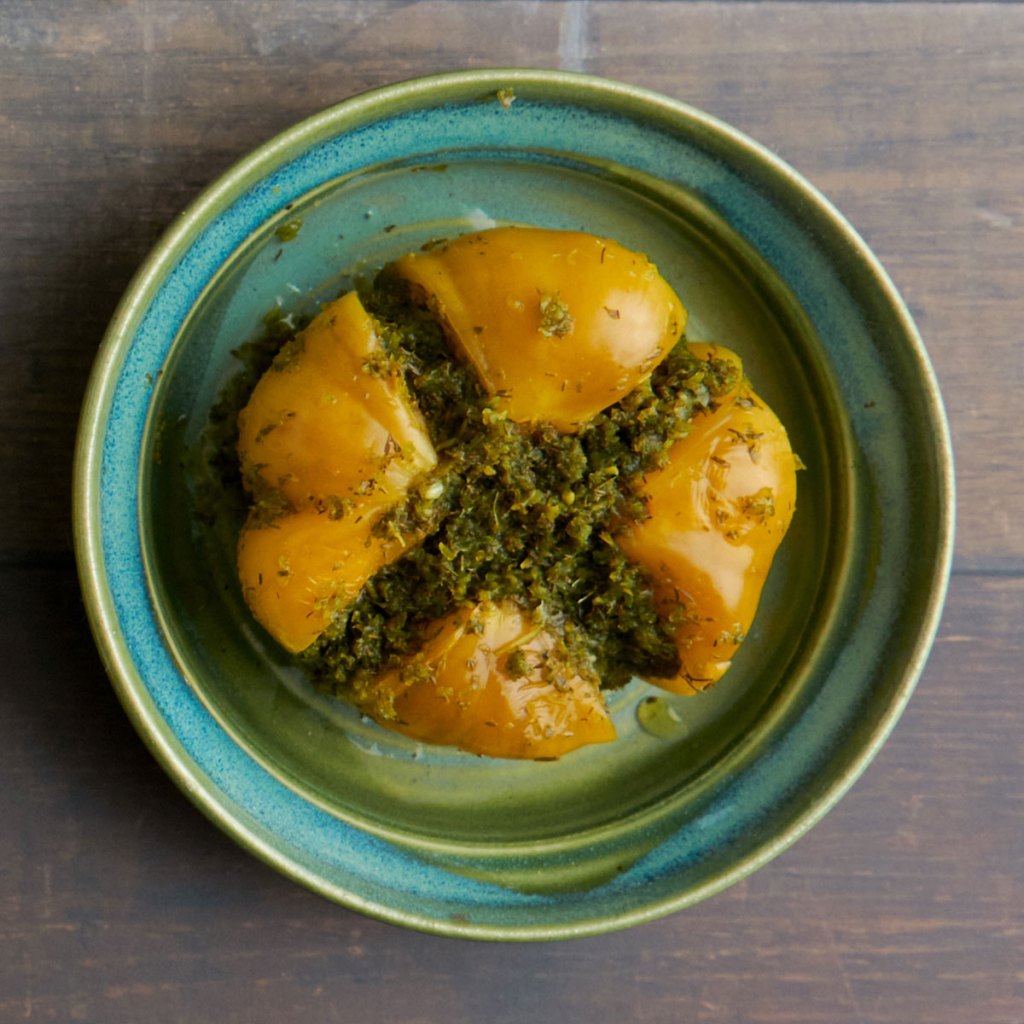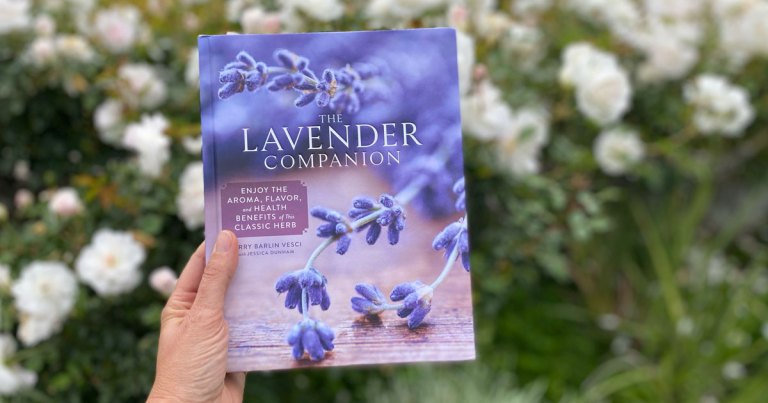Georgian-Style Fermented Green Tomatoes: A Tangy Delight
Discover the art of fermenting green tomatoes with this delicious recipe from Fermented Vegetables, 10th Anniversary Edition.
We absolutely love these fermented tomatoes. They are not only delicious but also quick to make and look gorgeous on a charcuterie board.

The recipe derives from a traditional Georgian one—that is, the Republic of Georgia, not the US state. A long time ago, Kirsten was at a class where the instructor said, “I always name the lineage of my teachers,” and then proceeded to name the person they learned from as well as the people who had taught their teacher.
This recipe, likewise, has a lineage of inspiration we’d like to credit: It comes by way of a blog post by Eva Martínez in which she credits Татьяна Пястолова for sharing the recipe with her. When Kirsten reached out to Eva, she resonated with Eva’s thoughts when she said, “It’s important to make known the recipes so they don’t remain in oblivion.”

You can use any green tomatoes, whether small or large, but we have found that using 6 to 9 medium ones is better than just a few large ones, as it is easier to pack them in a jar in a way that holds everything in place.
Yields around 2 quarts (1.9 l). We use the Salt Pressing technique (found on page 80 in Fermented Vegetables, 10th Anniversary Edition).
Ingredients
- 2 pounds (1 kg) green tomatoes (preferably medium size)
- 2 tablespoons (34 g) unrefined salt
- 1 bunch (65 g) parsley, roughly chopped
- 4 stalks celery, roughly chopped
- 1–3 jalapeños, as desired, roughly chopped
- 4 tablespoons (12 g) dried dill weed or 1 cup (56 g) fresh dill weed
- 6–8 cloves garlic, peeled and chopped
- Large grape leaves or parchment paper, to top the ferment
- 1–2 cups (237–473 ml) Basic Brine (1½ teaspoons/8.4 g unrefined salt per cup unchlorinated water)
Instructions
- Rinse the tomatoes. Starting at the top (stem end), cut two slits, forming a cross, down through each tomato, stopping before you reach the bottom. Sprinkle salt in each tomato and place in a small casserole dish, wedging them tightly together if you can, with the crosses facing up.
- Weight the tomatoes heavily with your method of choice (we offer some options on page 46). Cover the dish and let it sit on your counter for 8 hours or overnight. This will press out the brine, which you’ll use later for the fermentation.
- When you’re ready to stuff the tomatoes, combine the parsley, celery, jalapeños, dill weed, and garlic in a food processor and process to a paste.
- Fill each tomato with the paste, close the slits as best you can, and tuck them into a crock or widemouthed jar, pressing and wedging as you go. When all the tomatoes are in place, pour in the brine created by the initial pressing.
- Top with grape leaves, horseradish leaves, or any other aromatic herbs, such as celery leaves. Again add weight to the top of this ferment. Place on the counter and repeat the pressing for 24 hours.
- After 24 hours, check the ferment. If it has not released enough juice to fully cover the tomatoes and leaves, make a small batch of Basic Brine and pour in enough to submerge them.
- Follow the instructions for your fermentation vessel. For a jar, if using the burping method make sure there is little headspace and seal lid tightly. Burp daily or as needed.
- Alternatively, top the ferment with a quart-size ziplock bag. Press the bag down onto the top of the ferment and then fill it with water and seal.
- Let ferment for 10 to 20 days. You will know the tomatoes are ready when their color mutes, the brine becomes cloudy, and the smell and taste are pleasingly acidic.
- Store in an airtight jar in the fridge, where the tomatoes will keep for 6 to 8 months. After tomatoes have been enjoyed, use any leftover pasty brine as a pickling bed or as a flavoring in a dish.
Excerpted and adapted from Fermented Vegetables, 10th Anniversary Edition © Kirsten K. Shockey and Christopher Shockey.
This updated and revised bestselling guide to fermenting vegetables shares 65 new recipes, 8 new vegetable and fruit entries, 12 new producer profiles, 4 new fermentation techniques, and a greater emphasis on zero-waste processes.
Since the first edition of Fermented Vegetables was published in 2014, enthusiasm for fermentation has bubbled over—in part, because of the ongoing research into the importance of gut health. Unlike other forms of food preservation, fermenting offers the benefit of boosting gut health while introducing unique flavors into ordinary dishes. Kirsten and Christopher Shockey have been at the forefront of the fermentation movement and are two of its most widely respected teachers. Fermented Vegetables has become the go-to reference for people who want to start fermenting; its broad scope, accessible recipes, and attractive package, combined with the Shockeys’ authority, are a winning combination.The second edition of the book builds on the success of the first, with new techniques like using Japanese pickle beds and turning ferments into seasoning pastes and powders. It includes 65 new recipes; other recipes that utilize fermented foods have been revised to minimize the use of animal products and alcohol. In addition, the authors have written 8 new fruit and vegetable entries and 12 new profiles, which feature producers from around the world. All information about the science of gut health has been updated to reflect the enormous amount of research that has been done over the last decade.
This publication conforms to the EPUB Accessibility specification at WCAG 2.0 Level AA.











